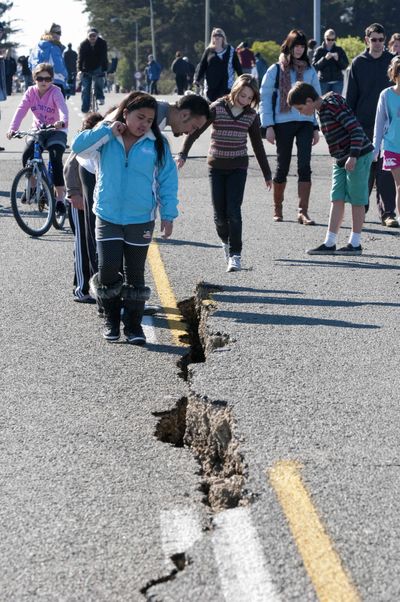Big earthquake jolts southern New Zealand
No deaths reported despite 7.1 magnitude

WELLINGTON, New Zealand – A powerful 7.1-magnitude earthquake damaged buildings, cut power and knocked residents off their feet on New Zealand’s South Island early today, but there were so far no deaths and only two injuries reported.
Panicked residents in their pajamas ran into the streets of the southern city of Christchurch after the pre-dawn quake, residents said. There were reports of some people trapped in damaged buildings – though none appeared to be crushed by rubble – and a few looters broke into some of the damaged shops in the city of 400,000, authorities said.
Chimneys and walls had fallen from older buildings, roads had been blocked, traffic lights out and power, gas and water supplies disrupted, Christchurch Mayor Bob Parker said. He warned that continuing aftershocks could cause masonry to fall from damaged buildings.
The quake, which hit 19 miles west of Christchurch according to the state geological agency GNS Science, shook a wide area, with some residents saying buildings had collapsed and power was severed. No tsunami alert was issued.
GNS Science initially reported the quake as magnitude 7.4, but later downgraded it after re-examining quake records. The U.S. Geological Survey, in America, measured the quake at 7.0.
Parker said it caused “a lot of damage to our key infrastructure … water, wastewater systems … but the most important thing is that there has been no loss of life.”
Christchurch fire service spokesman Mike Bowden said a number of people had been trapped in buildings by fallen chimneys and blocked entrances, but there were no reports of people pinned under rubble.
Christchurch Hospital said it had treated two men with serious injuries and a number of people with minor injuries.
Police Inspector Al Stewart said that some people had been arrested for looting.
The quake hit at 4:35 a.m., New Zealand’s National Radio reported.
New Zealand’s last major earthquake was a magnitude 7.8 in South Island’s Fiordland region on July 16, 2009 – a temblor that moved the southern tip of the country 12 inches closer to Australia, seismologist Ken Gledhill said at the time.